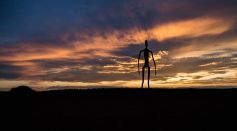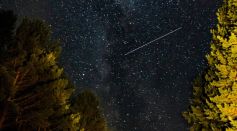SPACE
Asteroid's Flyby Shows Earth's Planetary Defense In Action
Astronauts Get Slimy With Nickelodeons' Iconic Green Slime Aboard the ISS to Test the Goo’s Behavior in Microgravity
Astronomers Uncovered First Evidence Ever of A River On Mars Which Flowed Over 3.7 Billion Years Ago
NASA Captures How The Earth Breathes: Understanding the Mechanisms Behind Climate Change and Air Pollution
China Successfully Launched Its Redesigned New Generation Manned Spaceship
Over 500 Patches of Freshly Exposed Bedrock Found on the Moon Proving That It Is Not a Dead Rock After All
Comet Swan is Coming This Month and Might be at its Brightest Making it Visible to the Naked Eye!
[Listen] NASA's Sonified Hubble Deep Space Image of the Galactic Treasure Chest Will Give You Chills

Scientists Plan to Study Dead Stars and Exoplanets to Look for Fingerprints and Other Signs of Life

Astronomers Catch Radio Signals Emanating From the Milky Way; Where Is the Source Coming From?

Don’t Miss! Eta Aquariids Meteor Shower To Light the Sky This Weekend
Ingenuity: NASA's Mars Helicopter Will Attempt First Powered Flight On Another World

Lunar Meteorites For Sale: Fifth Largest Moon Rock Found on Earth Up For Grabs For $2.5 Million
Emirate-Built Mars Explorer Sent to a Far Away Japanese Island for Its Final Preparation Ahead of Its July Launch
Most Popular

Can EV Batteries Be Recycled? How Lithium Recovery Supports Sustainable Batteries

Coral Bleaching Crisis: How Ocean Warming Threatens Marine Ecosystems Worldwide

El Niño and La Niña Explained: How Climate Cycles Drive Extreme Global Weather Patterns

V2G Technology: How EV Energy Storage Utilizes Smart Grid and Renewable Energy Integration




